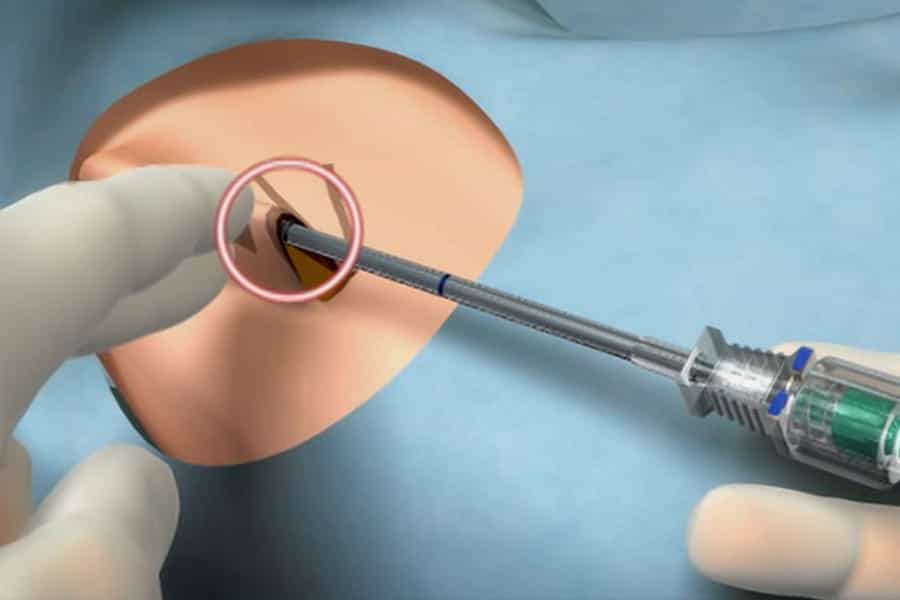Probuphine is the first buprenorphine implant for treatment of opioid dependence.
It supplies patients with a constant, low-level dose of buprenorphine for six months at a time and is designed to improve patient compliance and outcomes.
What is buprenorphine?
Buprenorphine is a drug meant to help relieve cravings during opioid maintenance therapy and heroin detoxification. It is a synthetic opiate, meaning it can “trick” the brain into thinking it’s a real opiate and trigger a similar release of feel-good chemicals to counter withdrawal symptoms. It is also a partial opioid agonist, meaning that it binds to the same receptors in the brain as opioids, but doesn’t bind as strongly as they do.
What is Probuphine made out of?
Probuphine contains 80 mg of a sustained release formulation of buprenorphine. This drug is contained in an ethylene vinyl acetate (EVA) capsule that is 26 mm long and 2.5 mm in diameter (about the size of a matchstick.) This type of capsule is also used in subdermal implants, ocular implants, vascular stents, and IUDs; there is no risk of accidental drug “dumping” from the capsule and into the body.
Is Probuphine safe?
Probuphine is FDA approved, which means it has been examined thoroughly for safety and efficacy. Two Dreams founder Andrea Barthwell, MD, DFASAM actually played an instrumental role in this approval, speaking to the panel about the clinical need for medication assisted treatment. Safety is comparable to other forms of buprenorphine administration, and implant-related adverse effects (ex. infection at the implant site) are very manageable.
Who should use Probuphine?
Probuphine is recommended for patients who are already stable on low-to-moderate doses of Buprenorphine and also fit one of the following criteria: high risk of diversion, poor adherence, lack of MAT access, hectic schedule, and households with children. You should, of course, consult with your primary care physician before making any decisions about medication.
How is Probuphine administered?

Probuphine is administered via four small implants placed under the skin in the upper arm. Implantation is a brief, minor office procedure that uses local anesthesia. The implants slowly release buprenorphine over the course of six months.
Why might someone choose Probuphine over another method of buprenorphine administration?
Probuphine provides a safe and effective alternative to taking a pill or filmstrip every day. With Probuphine delivering long-term continuous treatment, there is no need to remember a buprenorphine medication regimen; the implant does all the work for you. It also minimizes the amount of illegal resale and possession, which will be a highly beneficial public health service. It allows patients to focus on parts of recovery other than medication, like making behavioral changes, building support systems, etc.
Where can I get Probuphine?
Physicians must be certified to prescribe buprenorphine, and then undergo specialized training to become certified for Probuphine implantation and administration. Two Dreams founder Andrea Barthwell, MD, DFASAM is certified for Probuphine administration and will be offering treatment services in the near future. In the meantime, click here ( http://www.samhsa.gov/medication-assisted-treatment/physician-program-data/treatment-physician-locator ) to find a physician near you who is eligible to prescribe Buprenorphine, and ask if they are certified for Probuphine implantation.
Sources Cited
Probuphine for Maintenance Treatment of Opioid Dependence PDF